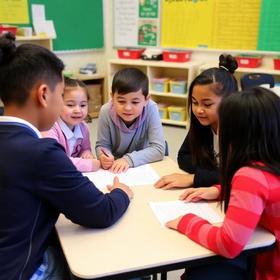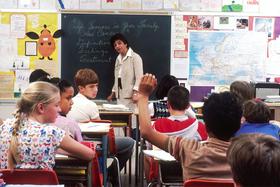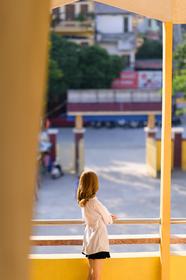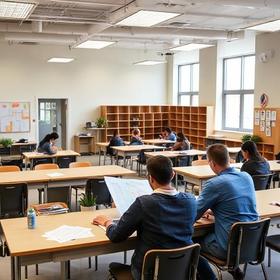Inside the Daily Life of a Private School Student
Private schools are often admired for their rigorous academics, strong community values, and well-rounded student experiences. Yet for parents and prospective students, understanding what daily life looks like inside a private school is just as important as reviewing tuition, rankings, or admissions.
What is a typical day like for a private school student in 2025? While routines vary by institution, most private schools share a carefully structured balance of academics, extracurriculars, community, and downtime. This balance not only prepares students for college but also fosters resilience, leadership, and independence.
Morning Routines: Structured and Purposeful
Private school students usually start their mornings earlier than their peers in public schools. Depending on whether a school is day-only or includes boarding students, the day begins with one of the following:
Dorm wake-up and breakfast (boarding schools): Students rise around 6:30–7:00 a.m., head to the dining hall for breakfast, and prepare for classes.
Morning commute (day schools): Students may carpool, take school-arranged buses, or drive themselves to campus.
Most schools begin classes around 8:00 a.m., often with advisory meetings, chapel, or homeroom check-ins that center students for the day. These structured starts reinforce a sense of community and accountability.
Academic Blocks: Rigor With Flexibility
Private schools are widely known for their small class sizes and strong academic expectations. A typical class period lasts between 45 and 80 minutes, depending on whether the school uses a traditional or block schedule.
Students might rotate through:
Core subjects such as English, math, science, history, and world languages.
Electives ranging from coding and robotics to visual arts, theater, or entrepreneurship.
Advanced Placement (AP), International Baccalaureate (IB), or honors classes, where available.
Because of lower student-to-teacher ratios, private school students often enjoy personalized attention and more interactive, discussion-driven lessons. This model not only encourages mastery but also fosters curiosity.
👉 According to the National Association of Independent Schools, 63% of private schools in the U.S. now offer advanced STEM courses beyond AP-level, reflecting the growing demand for innovation and problem-solving skills.
Midday: Lunch and Campus Life
Lunch at a private school is more than a quick meal—it’s a social anchor. Dining halls often emphasize nutritious, diverse options, with menus catering to vegetarian, vegan, gluten-free, and international diets.
During this time, students connect with friends, teachers, and advisors. At many schools, faculty join students at tables, which strengthens mentorship and community bonds.
Some schools also integrate club meetings or leadership activities during midday breaks, allowing students to balance academics with extracurricular involvement.
Afternoons: Athletics, Arts, and Extracurriculars
The hallmark of private school life is its emphasis on well-rounded development. After academic classes, afternoons often shift toward athletics and the arts.
Athletics
Team practices typically run from 3:30–5:30 p.m.
Students may participate in seasonal sports such as soccer, lacrosse, swimming, or basketball.
Fitness programs ensure that even non-athletes remain active.
Arts and Enrichment
Theater rehearsals, orchestra practices, or studio art workshops often take place after classes.
Schools frequently host seasonal performances, exhibitions, and competitions that showcase student talent.
Leadership and Clubs
From debate societies to robotics teams, private school students are encouraged to lead and collaborate. This extracurricular involvement is not just résumé padding—it’s preparation for future leadership roles.
👉 The Independent Schools Association of the Central States notes that more than 85% of private school students participate in at least one extracurricular activity, underscoring the value of balanced engagement.
Evenings: Homework, Study Halls, and Downtime
For boarding students, evenings are structured around study hall periods, often lasting 1–2 hours under faculty supervision. Day students typically complete homework at home, but schools emphasize time management to prevent overload.
In addition to academics, evenings may include:
Dorm activities such as movie nights, intramural games, or casual gatherings.
Quiet hours that begin around 10:00 p.m. to encourage healthy sleep routines.
By integrating both productivity and relaxation, private schools create a rhythm that fosters academic achievement without neglecting student well-being.
Weekends: Balance of Freedom and Structure
Life at a private school does not end on Friday afternoon. Weekends are designed to offer students both independence and support.
Boarding schools often provide campus activities such as dances, community service, or outdoor excursions.
Day schools may still host Saturday athletic competitions or arts performances.
Many schools also schedule Saturday morning classes or enrichment programs, a tradition that emphasizes continual learning.
👉 According to a 2025 Education Week feature, private schools increasingly prioritize wellness by offering yoga, mindfulness workshops, and unstructured leisure time alongside academic enrichment.
Key Differences: Private vs. Public School Daily Life
| Aspect | Private School | Public School |
|---|---|---|
| Class Size | Small (10–15 students) | Larger (20–30 students) |
| Schedule | Mix of academics, athletics, arts | Primarily academics |
| Faculty Access | Teachers often double as advisors | Less direct mentorship |
| Extracurriculars | Mandatory or strongly encouraged | Optional, less integrated |
| Evenings | Supervised study halls (boarding) | Independent at home |
This structured environment ensures that private school students receive both academic rigor and holistic development.
The Bigger Picture: Preparing for College and Beyond
Ultimately, daily life at a private school is intentionally designed to nurture balance, independence, and leadership. Students learn not only how to excel academically but also how to manage time, develop resilience, and build relationships.
By graduation, many private school students have already experienced living semi-independently, navigating rigorous schedules, and balancing responsibilities—all essential skills for college and beyond.
Conclusion
Daily life at a private school in 2025 blends structure and freedom, rigor and creativity, academics and community. Students move from classrooms to sports fields, from dining halls to dorm activities, always within a framework that emphasizes personal growth and excellence.
For families considering this educational path, it is important to see beyond academics alone. The rhythm of a private school day—balanced, intentional, and holistic—reveals why so many graduates thrive in college and in life.












